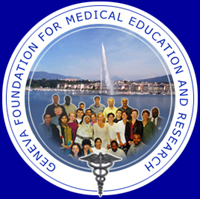The protection of intellectual property: an unavoidable topic for teachers and researchers
La protección de la propiedad intelectual: tema ineludible para docentes e investigadores
Marilyn Hernández
Gómez1* https://orcid.org/0000-0003-3002-3601
Damarys Olivera Cuadra1 https://orcid.org./0000-0002-9591-1266
Patricia Guevara Ferrer1 https://orcid.org/0000-0002-1314-1289
1 Villa Clara University of Medical Sciences. Cuba.
*Author for correspondence. E-mail: marilynhg@infomed.sld.cu
Submitted: 16/3/2019
Accepted: 2/12/2019
To the editor:
Coexistence in a world where the development of information and communication technologies disseminates research at a surprising speed is not secret. Access to them has grown dramatically, that´s why professional researchers are called to use existing legal mechanisms to protect their results. It is the objective of the authors of this letter to warn about the need to preserve scientific results, because they have observed that in the last five years some inertia has been evidenced by the teaching staff of the Faculty of Medicine of Villa Clara University of Medical Sciences to undertake this task.
Since the triumph of the Cuban revolution, the highest political authorities in the country focused on achieving the access of the entire population to health services, organizing a national system in which several fields converge: research and development, technological innovation, policies, plans and programs that match the health branch, the training of human resources, industrial development and technological research.
Intellectual property is divided into two modalities: industrial property and copyright, the first is governed by the Cuban Office of Industrial Property (Ocpi) of the Ministry of Science Technology and Environment (Citma), it refers to the rights acquired through the creation of inventions and industrial designs, topographies of integrated circuits, trademarks and distinctive signs, brand services, names and trade names, designations of origin, geographical indications and business secrets. The copyright was implemented by the National Copyright Center (Cenda) of the Ministry of Culture and is empowered to regulate the rights of authors on their individual creations, specifically artistic, scientific, literary and educational, and original scientific results as a result of their intellectual activity.(1)
In contrast to the Cuban reality, in the Latin American region there are strategies, policies, programs and plans related to health, although their scope and dissemination differ. This, together with social and economic factors, explains that health inequality persists in these countries. The current legal health and intellectual property frameworks do not respond in any case to the challenges or barriers identified in order to gain access to health services and especially medicines.(2)
In spite of the existence of Resolution 21/2002 of Citma(3) in Cuba, which establishes the National Industrial Property System and it´s binding, that´s why it is mandatory for all agencies to comply; the culture of intellectual property protection and legislation among creators and agencies such as the Ministry of Public Health is still insufficient. Fonseca Díaz et al.(4) affirm that by means of patents and licenses countless profits are lost, the numbers of patents requested could be greater and the scientific-technological advances much more significant.
In the medical sciences, the generation of practical guides, flowcharts, diagnostic and treatment algorithms, indexes, prognoses and predictive scales is frequent. These scientific results require their protection by the authors, which gives them an exclusive right to prevent third parties, without their consent, from performing acts of manufacture, use, sale or importation; however, the creator has the right to assign or transfer them by succession and to grant license agreements to the interested parties.(4)
In the daily work, culture to protect intellectual property is not promoted, leading to denigrating attitudes on the part of those who, in violation of medical ethics and the legal regulations issued in this regard, they appropriate products made by other professionals. Recall what happened to Carlos Juan Finlay with his discovery of the mode of transmission of yellow fever and the improper act of Walter Reed who came to convince himself that he was no longer the verifier, but the author of the theory clearly formulated by Finlay twenty years before, and he referred to it as "my theory". In the United States Reed was unfoundedly exalted to the rank of "discoverer of the cause of yellow fever".
Due to the relevance of the topic and the lack of risk perception by researching teachers on the rubbery of their scientific results, whether individual and / or collective, it is necessary to raise awareness in this community, in addition to the structuring and implementation of the Internal Industrial Property Systems be officially applied at the institutional level and not spontaneously as it´s done today. This topic has to be under unavoidable analysis and discussion by the researching teaching staff of the Faculty of Medicine of Villa Clara.
BIBLIOGRAPHIC REFERENCES
1. World Intellectual Property Organization. Understanding copyright and related rights. [Internet]. Geneva: Wipo; 2016. [Citado 05/05/2018]. Disponible en: http://www.wipo.int/edocs/pubdocs/en/wipo_pub_909_2016.pdf
2. García Delgado BM, Silva AP, Rodríguez JM. Mapa conceptual en salud y propiedad intelectual en Centroamérica y la República Dominicana. Rev Panam de Salud Pública [Internet]. 2019 [citado 15/05/2018];(43):[aprox. 18 p.]. Disponible en: https://www.scielosp.org/scielo.php?pid=S1020-49892019000100800&script=sci_arttext
3. Cuba. Ministerio de Ciencia, Tecnología y Medio Ambiente. Sistema de propiedad Industrial. Resolución 21/2002. La Habana: Citma; 2002.
4. Fonseca Díaz IM, Llano Gil EA. Necesidad de la implementación del Sistema Interno de Propiedad Intelectual en las ciencias médicas. Gac Med Espirit [Internet]. 2017 [citado 20/05/2018];19(3):[aprox. 4 p.]. Disponible en: http://scielo.sld.cu/scielo.php?script=sci_arttext&pid=S1608-89212017000300001&lng=es
Declaration of interests
The authors declare no conflict of interest.
Authors' contribution
Marilyn Hernández Gómez: performed the literature searches, analyzed them, and helped in
the writing of the text.
Damarys Olivera Cuadra: performed the bibliographic searches, analyzed them, and helped
in the writing of the text.
Patricia Guevara Ferrer: performed the bibliographic searches, analyzed them, and reviewed
the writing of the text.
This article has been published under the Creative Commons license.
Copyright (c) 2019 EDUMECENTRO

Esta obra está bajo una licencia de Creative Commons Reconocimiento-NoComercial-CompartirIgual 4.0 Internacional.










